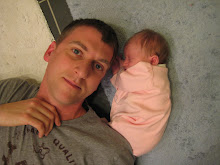Thanks to all who followed and related to my recent posting about running strides and form. I had a good month, and I promised to keep updates here, so update I shall!
One month ago I had a running analysis from the kind folks at the Providence Sports Care Center at Jeld-Wen Stadium in Portland. They gave me some tips, and I tried a few other things on my own.
Weeks 1-2
In specific, I began by running 10-20 minutes on an indoor track while following the recommendations of my physical therapist. I was doing this 3-4 times/week for the first few weeks. Initially, I was very surprised by how much work it was to keep my hips forward and my back straight for this period. The PT warned me that I would feel the difference in soreness on my backside, which I assume means my glutes and my hamstrings. I timed the footstrikes on my watch, and found I could keep this pace reliably for about 15 minutes without tiring. It felt more like a drill than a run. One day my wife was at the gym, and I showed her the difference between my “old” loping stride and my “new” upright stride. Linden reported that there was indeed a HUGE difference, and encouraged me to keep up the drills and form.
During this period I found an interesting article about this exercise known as the 100-up. I focused on the first part of the drill, known as the “minor” and started doing them around the house.
I felt like I was making some progress building strength in my hip and lifting my knees a bit higher. On top of this drill I was loosely following what my PT called my “home program.” Most of these drills seemed to focus on building core stability and getting at the smaller muscles in my abdomen and hips. Some of the drills also focus on treating each leg separately. I can see that part of my problem has been a kind of compensation that allows some muscles to be lazy while others do all the work. In a future post I will describe my current “home program” and share some new drills.
Week 3
After a few weeks on the indoor track I started feeling good about my progress and ventured outside for some running on the trails. I had good success with this for 20-30 minutes of running, but noted that my cadence slowed on the downhills and increased on the ups. I ran in old running shoes for this period, and had little problem with my motion control Mizuno Alchemy shoes that I’ve been running in for years. At the gym I had been using a pair of Brooks Avalanch shoes that I bought in the fall. They were similar to the Mizunos in that they seem to keep my heel in place, although I am more focused on the midfoot strike. Sadly, I left the Brooks shoes at the gym one day and never found them again.
I started running in a cheap pair of minimalist Saucony Stratos that I bought last winter at Big 5 for about 30 bucks. This gave me all sorts of soreness in my IT band and quads, but I didn’t immediately connect it with the shoes. Next, this week I went for a run with a close friend, (Ben Chaffin) and we did what I would call an “easy four” down to the waterfront. This run was harder than usual, and I think my pace was faster than I’ve been running. The result was about 10 days of significant soreness in my left IT band and nighttime swelling in that same knee. Life was busy, and kept me from doing much running, so I eased off for a few days.
Week 4 - 5
I was starting to get discouraged by the cranky knee, but one day I stepped out for a short run and noticed something good about my new stride – I could no longer relax my straight back or stick out my butt like I used to do. The “upright” position seems to have planted itself in my muscle memory and I can keep the position for much longer periods, maybe even indefinitely! This is a great sign for my ambitions to adopt a new form. Big news!
I bought another new pair of shoes this week and saw immediate improvement in my knee pain and IT band troubles. I also increased my use of the foam roller, a tool that has helped in the past to fight inflexibility and soreness. I resumed my running frequency and even stepped out for a longer group run one evening. We ran for about an hour and although I felt some soreness there was no lasting swelling or trouble. I think I’m back on track.
To recap, I see that my running program needs some of each of the following: consistency, flexibility, strengthening, and work. By the last thing here I mean that “getting into shape” means taxing my mechanical system and giving it short periods to recover. Always in the past I have focused on taxing my cardiovascular system, but it is clear that the mechanical one is more important for long term fitness.
I’m currently running every other day and hoping to build a base this winter for more fast running in the spring! I’ll continue to focus on the 5k and 1 mile distances for the next six months, but most important is maintaining a level of fitness in which I avoid injury and keep training!
Subscribe to:
Post Comments (Atom)

No comments:
Post a Comment